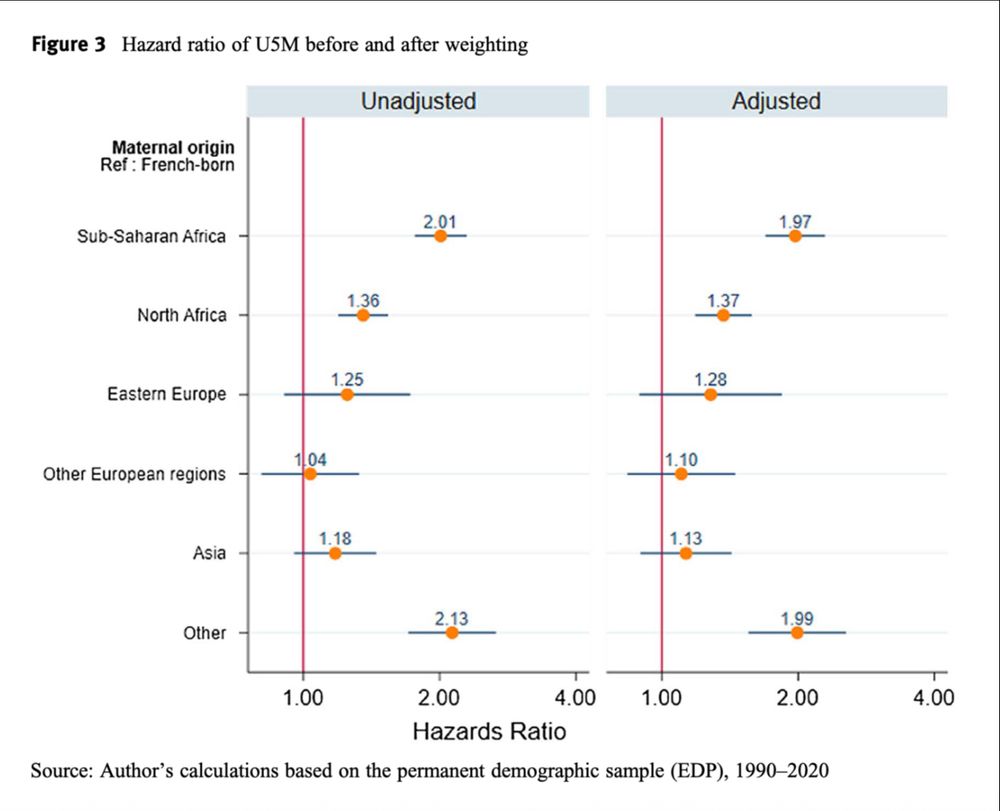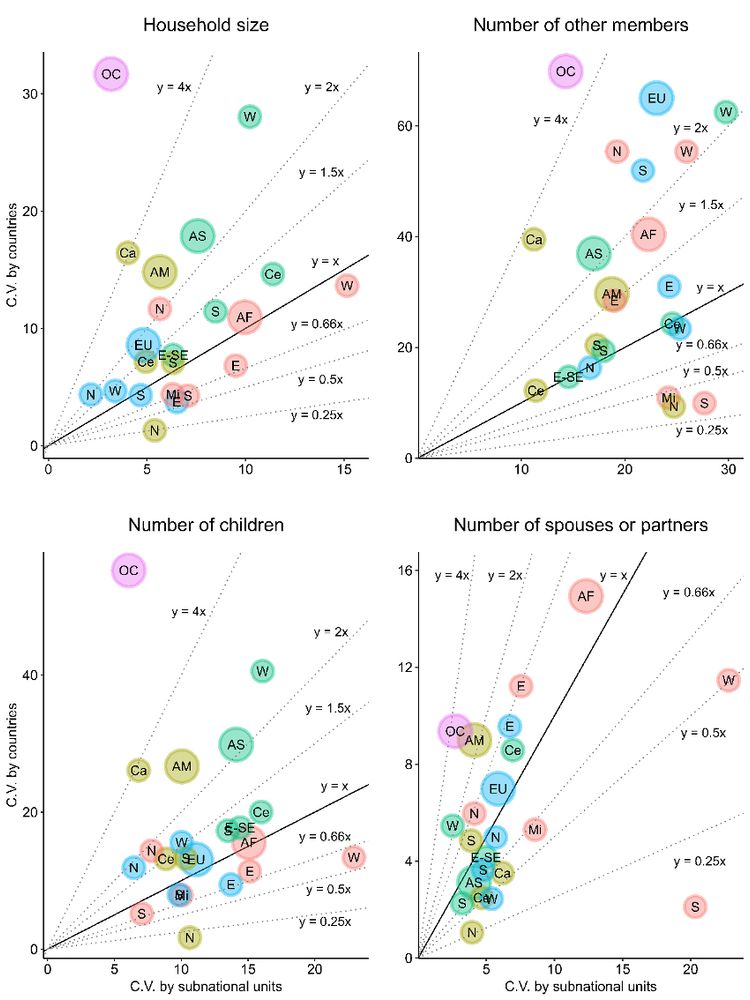Our call for papers is out! Submit until May 15 2026.
05.12.2025 13:29 — 👍 4 🔁 4 💬 0 📌 0

📢 Call for papers is now open!
We invite you to submit your contributions to the Vienna Yearbook of Population Research 2027 special issue "Demographic perspectives on migration".
📆 Submit until 15 May 2026.
🔗 viennayearbook.org/call
#demography
@vypr.bsky.social @demographyvienna.bsky.social
05.12.2025 13:28 — 👍 3 🔁 3 💬 0 📌 1
#demography @demographyvienna.bsky.social
22.10.2025 14:17 — 👍 0 🔁 0 💬 0 📌 0

Vienna Yearbook of Population Research 2025
The Vienna Yearbook of Population Research is an open access journal that features contributions addressing population trends as well as a broad range of theoretical and methodological issues in popul...
The Introduction of the 2025 Issue of the @vypr.bsky.social is out! An overview of the 22 contributions on the interplay between population diversity, social inequality, and the causes and consequences of socio-economic status (SES) differences in demographic behaviour.
austriaca.at?arp=0x0040e0...
22.10.2025 14:17 — 👍 4 🔁 4 💬 1 📌 0
‼️New Debate on @vypr.bsky.social! Alícia Adserà ponders on how artificial intelligence (AI) is propelling a new phase of technological change beyond routine automation: AI directly impacts fertility decisions
@demographyvienna.bsky.social #demography
austriaca.at?arp=0x0040de...
22.10.2025 14:11 — 👍 0 🔁 0 💬 0 📌 1

‼️New Debate on @vypr.bsky.social! Alícia Adserà ponders on how artificial intelligence (AI) is propelling a new phase of technological change beyond routine automation: AI directly impacts fertility decisions 🔗https://austriaca.at/0xc1aa5572_0x0040deb0
@demographyvienna.bsky.social #demography
22.10.2025 00:23 — 👍 3 🔁 1 💬 0 📌 2
co-authors Shreyantika Nandi
and Rashmi Rashmi
11.09.2025 23:45 — 👍 0 🔁 0 💬 0 📌 0

NEW 🔥 Ronak Paul and colleagues examine the heterogeneity in under-five mortality by household generations and household structure using pooled data from six rounds of the Nepal Demographic and Health Survey (1996–2022). 🔗 austriaca.at?arp=0x0040ba...
#demography
11.09.2025 23:45 — 👍 2 🔁 0 💬 1 📌 0
#demography co-authors Ken Richardson, Samba Siva Rao Pasupuleti, and Susan Hartono
11.09.2025 23:32 — 👍 0 🔁 0 💬 0 📌 0

‼️New paper out ! Santosh Jatrana et al., investigated differences in obesity levels among immigrants from English-speaking and non-English-speaking countries relative to those among non-immigrants in Australia. Find the paper online 🔗:
@demographyvienna.bsky.social
austriaca.at?arp=0x0040c0...
11.09.2025 23:32 — 👍 0 🔁 0 💬 1 📌 0
co-authors Ken Richardson, Samba Siva Rao Pasupuleti
, Susan Hartono #demography
11.09.2025 23:30 — 👍 0 🔁 0 💬 0 📌 0

‼️New Debate contribution from Leo van Wissen and Becky Arnold explores the role of migration in population change at different levels of urbanisation. 👇🔗 austriaca.at/0xc1aa5572_0...
#demography @demographyvienna.bsky.social
15.08.2025 01:10 — 👍 5 🔁 1 💬 0 📌 0
Martin Spielauer, Philipp Warum
15.08.2025 00:31 — 👍 0 🔁 0 💬 0 📌 0
#demography
15.08.2025 00:31 — 👍 0 🔁 0 💬 1 📌 0

Using Austria as a case study, Thomas Horvath et al. demonstrate how capturing life course heterogeneity improves the accuracy and policy relevance of socio-demographic projections, as labour force dynamics and economic dependency ratios 🔗 austriaca.at?arp=0x00402f... @demographyvienna.bsky.social
15.08.2025 00:31 — 👍 1 🔁 0 💬 1 📌 0
#demography
15.08.2025 00:28 — 👍 0 🔁 0 💬 0 📌 0

‼️Magdalena Muszyńska-Spielauer and Tim Riffe @timriffe1.bsky.social examine how differences in risk composition between a synthetic life table cohort versus a life table under current mortality conditions influence mortality statistics 🔗 austriaca.at?arp=0x004035... @demographyvienna.bsky.social
15.08.2025 00:28 — 👍 3 🔁 1 💬 1 📌 0

Vienna Yearbook of Population Research 2025
Debate Assessing national vs subnational population heterogeneities in a global context Jesús García-Gómez - Juan Galeano - Albert Esteve Widowhood, Gender, and Disadvantage in India: Current Trends a...
‼️ New paper at the @vypr.bsky.social James Raymer and colleagues decompose the age-sex structures of immigrant populations in Australia and its major cities in 2021 by periods of entry, evidencing important differences 🔗 austriaca.at?arp=0x003fcd...
@demographyvienna.bsky.social
#demography
15.08.2025 00:18 — 👍 1 🔁 0 💬 0 📌 0
James O’Donnell, Qing Guan
15.08.2025 00:12 — 👍 0 🔁 0 💬 0 📌 0

🔥📈K.S. James, Ravi Sadhu and David E. Bloom Debate how widowhood presents significant challenges in India, with the proportion of widowed women being continuously greater than that of men; @demographyvienna.bsky.social 🔗 austriaca.at/buecher/file...
13.08.2025 23:38 — 👍 3 🔁 1 💬 0 📌 0

Vienna Yearbook of Population Research 2025
Debate Assessing national vs subnational population heterogeneities in a global context Jesús García-Gómez - Juan Galeano - Albert Esteve Review Does demography have a role in measuring homelessness? ...
‼️Wolfgang Lutz discusses selected possible consequences of growing inequality in skills within and between countries, and outlines a further research agenda in this Debate Piece just out in the Vienna Yearbook 🔗 austriaca.at?arp=0x004087...
@vypr.bsky.social @demographyvienna.bsky.social #demography
13.08.2025 00:22 — 👍 5 🔁 4 💬 0 📌 0
@demographyvienna.bsky.social #demography
13.08.2025 00:10 — 👍 0 🔁 1 💬 0 📌 0

🔥 Alyson van Raalte @alysonvanraalte.bsky.social , Yana Vierboom and Pekka Martikainen debate on how classic compositional change has become increasingly neglected in demography, as it shifts towards causal inference of individual-level determinants: austriaca.at?arp=0x004086...
13.08.2025 00:10 — 👍 5 🔁 1 💬 1 📌 0
co-authors Tord Finne Vedøy, Rannveig K. Hart, Jonas Minet Kinge, Astri Syse
12.08.2025 23:58 — 👍 1 🔁 0 💬 0 📌 0

‼️New Paper out! Baravelli and colleagues estimate the magnitude of health inequalities in Norway, a high-income country with a universal health care system but rising income inequality. Find out their main results here: 🔗https://austriaca.at/?arp=0x00408185§0x00408182
@demographyvienna.bsky.social
12.08.2025 23:58 — 👍 4 🔁 3 💬 1 📌 0
They find that disparities 📈in under-five mortality persist based on the mother’s origin.
23.07.2025 11:16 — 👍 1 🔁 0 💬 0 📌 1

‼️Paper just out! Emmanuel Idohou, Philippe Bocquier, and Michel Guillot investigate the role of parental origin in explaining the significant disparities that immigrant children in France face in terms of their survival 👇🔗https://austriaca.at/?arp=0x00407e65§0x00407e62
@demographyvienna.bsky.social
23.07.2025 11:16 — 👍 4 🔁 2 💬 1 📌 0

‼️New #Debate out in @vypr.bsky.social! Jesús García-Gómez, Juan Galeano and Albert Esteve discuss how national-level data can obscure important internal diversity, leading to misleading conclusions about demographic patterns 👇🔗https://austriaca.at/?arp=0x0040760c§0x00407608
@oeaw.bsky.social
16.07.2025 13:00 — 👍 5 🔁 3 💬 0 📌 1
@vypr.bsky.social Special Issue: "Delayed Reproduction: Patterns, Challenges and Prospects."
With an excellent team of guest editors:
@fertdem.bsky.social
@mccompans.bsky.social
#AliceGoisis
@passetwittig.bsky.social
See the call: austriaca.at/buecher/file...
09.07.2025 10:31 — 👍 1 🔁 1 💬 0 📌 0
The Michigan Population Studies Center & Population Dynamics and Health Program are interdisciplinary communities of scholars in population research and training: Where demographers find their people!
Democraft SDU is a student organisation in Denmark, that creates a professional and social network in the interdisciplinary areas of health, economics, and politics to bridge the gap between study and the demographic profession.
Generations & Gender Programme Czech Republic │ Part of @ggp.bsky.social │ Výzkum Současná česká rodina
CBS - NIDI - Sociologie - Demografie - Runner 🏃♂️
Alleen actief via: https://www.linkedin.com/in/rubenvangaalen/
Demographer and sociologist working at the INVEST Research Flagship at the University of Turku, Finland.
Fertility, assisted reproduction, miscarriage | Postdoctoral Researcher at Ined
https://mccompans.github.io/
Researcher at WU Wien & WIFO | Economics of long-term care, ageing and labour market, health economics
Researcher @cedar Umea University
PhD student in Labor demography MPIDR @mpidr.bsky.social & University of Oslo @uio.no .
Labour market, Uncertainty, family and health.
Sociologist, social demographer interested in family, fertility, assisted reproduction, works at BiB in Germany , views are my own
Improving understanding of the drivers & implications of population change & intergenerational connectivity. Funded by the Economic and Social Research Council (ESRC) UKRI, incl. Unis of Southampton, St Andrews, Stirling, Oxford, and Resolution Foundation.
Master student in Demography at Universität Wien
prev. Freie Universität Berlin
Migration | Mobility
Researcher: Demography, Work-family, Labour market, Gender
Scientific data resource providing detailed #mortality and #population data.
We follow #opendata principles.
www.mortality.org
Sociology PhD student; population health, trans health inequalities, gender, demography; avid reader; Goose; she/her; mom to 4 adult kids, 2 kitties, and the sweetest pittie ever
Demographer interested in parenthood and the life course. Formally at Vienna Institute of Demography, currently somewhere in Latin America
Political science, quantitative methods, data analysis, OSINT.
Gaming & Rugby
“Sig. Tabucchi, cosa le manca di più dell’Italia?”
“L’italiano”
Ikerbasque research fellow interested in sociology, inequality, extended family, childbearing.












